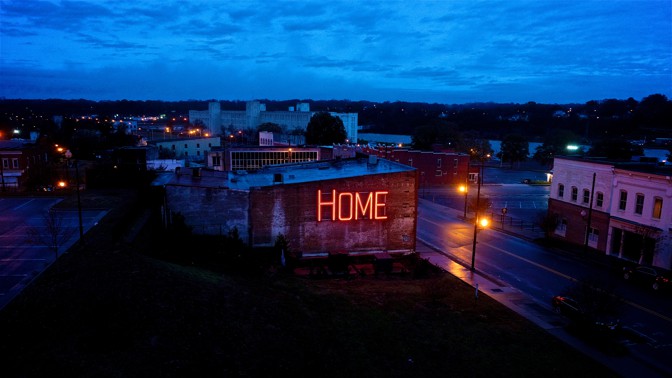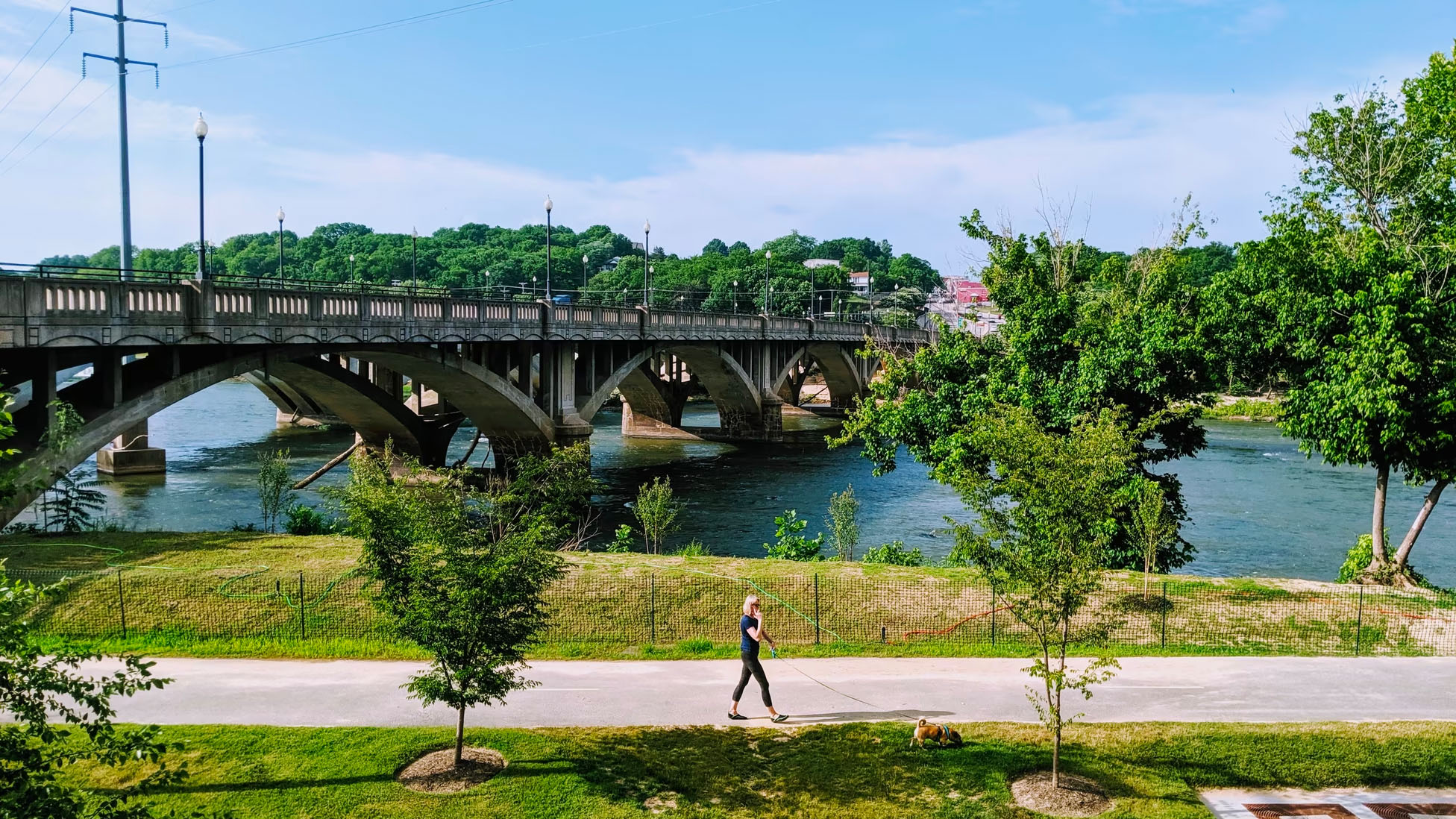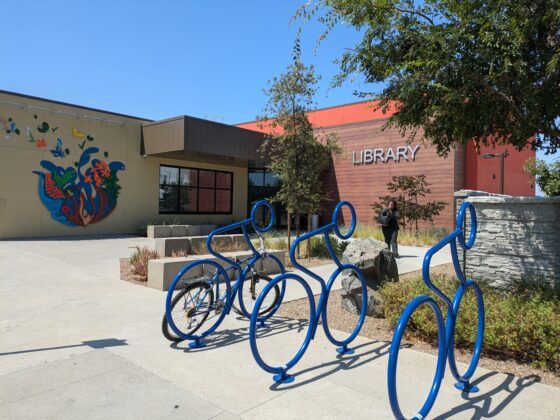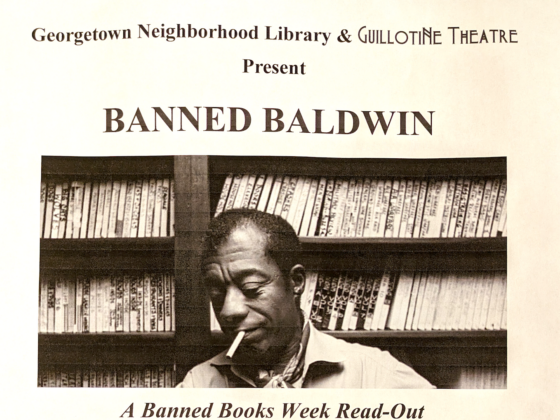Previously in this series: why the ups and downs of economic history have left the southern Virginia town of Danville with a genuine problem (what to do after its big mills closed), but also a significant advantage (the physical infrastructure that those old tobacco and textile sites left behind, much of it quite beautiful.)
Years ago, on the first reporting visit that my wife, Deb, and I made to Sioux Falls, South Dakota, I mentioned that the city seemed strangely “over-retailed” for a place of its size. That is, it had a super-abundance of malls, professional offices, restaurants, and other facilities. Why? As we learned, these reflected Sioux Falls’s emergence as the service-and-retail center not just for its own population but for the broad surrounding area.
In a similar way, Danville can now seem strangely “over-warehoused,” with more century-old large, stately brick structures than you would expect for a town of some 40,000 people. The buildings sprang up in Danville because it was so prosperous a trading and manufacturing center from the late 1800s onward. And they survived largely because the city became so economically troubled that no one could afford to tear them down.
Now many of them are being revived, reoccupied, and put to new use, as previewed here. The center of the activity is the “River District,” on the southern bank of the Dan River near the Main Street bridge. Decades ago, this was a center of tobacco trading and the textile business. One of the enormous factory buildings for Dan River Mills, known as the “White Mill” and abandoned for years, sits not far away.
“If you were here ten years ago, it would have been obvious that we were a mill town without a mill,” Rick Barker, a Danville native and entrepreneur who is now a downtown developer of historic properties, told me this month. “Now we’re becoming something else.”
What is that something? The purpose of this dispatch is to give a few illustrations of a city in the middle of becoming, and some brief background on work that’s been done and work that remains.

1) How it started. “I think where things really got going was when we finally tore down the Downtowner,” Karl Stauber told me early this month.
For the past dozen years, Stauber has been head of the Danville Regional Foundation, or DRF, which was founded in 2005 with the $200 million proceeds from the sale of a regional hospital to a private health-care firm and has been a major force in educational, cultural, and architectural development in the area ever since. (A year ago, Stauber announced that he would step down as the foundation’s CEO this summer; a DRF official named Clark Casteel will succeed him. For the record, we first learned about Danville, and talked with Stauber and Lori Merricks of the DRF, last year during a book-tour event and regional-development conference that their foundation sponsored. These new accounts are based on our recent return to Danville for a reporting trip. )
The Downtowner, a standard “mid-century modern” motel, had long been an eyesore and blight-generator right in the center of Danville. Ever since it went out of business in the 1980s, city renovation plans had started with proposals to knock it down. Yes, this might seem at odds with efforts to preserve the 19th-century shops and warehouses in the vicinity. But to oversimplify: most people believed that the old buildings had timeless-classic potential, and the Downtowner did not. Take a look, below, and judge for yourself.

In 2012, the city government, the regional foundation, and other organizations were finally able to act. “That really was a turning point,” Stauber told me. “The blighted structure symbolized what was holding us back. It represented the idea that nothing we tried would ever work. And we finally did away with it.” He went on to list other buildings, including a very popular downtown Y built with a view of the Dan River (described by Deb Fallows here), that, by contrast, “symbolized what was possible.”
Around the time demolition crews began taking apart the Downtowner, only about 400 people worked or lived in downtown buildings in the vicinity. This area had been informally known as the tobacco warehouse district; about the time of the demolition, the city started referring to it as the River District. “Within five years [of the renovation effort], that number went to 4,000,” Stauber told me. “It’s right around 6,000 people in the River District now.”

Rick Barker, the entrepreneur and property developer, offered a complementary measurement. “There’s about five million square feet of building inventory in the River District,” he told me. “Back when the River District project began, probably four million square feet was entirely vacant, or under-utilized. There’s less than two million feet left now. So half the work has been done.”
Hard economic and demographic indications — occupancy rates, office openings, retail and entertainment sites—obviously are crucial to judging any downtown area’s prospects. “But I keep thinking of the less-scientific measures,” Stauber told me. His foundation’s office is in a restored brick building that once housed tobacco operations, a block from a downtown plaza and fountain. “Ten years ago, you’d hear people say that they would only come downtown to pay parking tickets or get someone out of jail,” he said. But high school proms had happened on the weekend before our visit, and students by the hundreds came to the fountain to have their prom pictures taken. “That tells you something about what people perceive as the cool place to be.”
It would be obvious to any visitor that downtown Danville still has a long way to go. But it’s obvious to us how much further it has gone already than many other places we’ve seen.
2) How it is financed. This will be old news to anyone involved in commercial real estate. But for us, visits to recovering (or decaying) downtowns have been an ongoing education in the role of tax policy as a prime mover in starting or changing urban trends. (For instance, see this previous report by our colleague John Tierney on Allentown, Pennsylvania.)
Specifically in Danville, the tax policies that matter have been from two states, and the federal government. The states are Virginia, which offers builders a 25% tax credit for construction costs on historic-preservation projects like those in Danville — and neighboring North Carolina, which also had such a program but cut it back substantially five years ago. Both state credits come on top of a 20% federal tax credit for preservation projects, and in effect they dramatically reduced the capital costs for developers interested in restoring warehouses, abandoned factories, old shops, etc. (Do such tax preferences amount to “picking winners”? Sure. But in a tax regime that includes provisions like the carried-interest deduction for hedge-fund managers, I’ll defend the public benefits of this preference any time.)
The Virginia program fostered renewal efforts like those in Danville (and Roanoke and Lynchburg and Charlottesville and elsewhere). The cuts in the North Carolina program (though later partly reversed) enticed developers like those who had transformed tobacco and textile works in Durham and Winston-Salem to look out of state. Virginia was right next door.
Lower construction costs obviously mean that developers can charge tenants lower rent, which in turn lets buildings be occupied more quickly, which in turn adds customers and vitality to the downtown.
3) A test case: Craghead Street. “Coming to Danville now, it’s probably hard for you to imagine what this street used to look like,” the designer and developer Rick Barker, told me at his office in the 500 block of Craghead Street, in the River District.
“I can tell you that just five years ago, there were not two people in this city who wanted this building that we’re sitting in right now, or anything in the block.” The building we were sitting in, which Barker has turned into his office headquarters and is shown in a night shot below, now has a stylish exterior and especially interior hipness that would seem at home in any major city in North America or Europe. That office is on one end of the 500 block of Craghead Street; the shops and buildings along the entire block are part of a renovation effort, driven significantly by historic-preservation tax credits, that Barker’s company has underway.
“This street was named for Doctor Craghead, who was one of Danville’s first city council members,” Barker told me. “Five years ago we said that we wanted to make sure that people stopped calling it Crackhead Street. Our goal was to take the least desirable commercial block in the Dan River District, and make it the most desirable business address in the city. And we are on the way.”
At the other end of that block of Craghead, a restaurant called Mucho has opened up. A promotional video from the opening, which you can see below (or here), shows some of the reaction from both black and white patrons, in a city whose population is about 50-50 black and white.
How much further will the downtown renewal go? As always, it depends. But the distance traveled already is much greater than we would have guessed before we visited.




